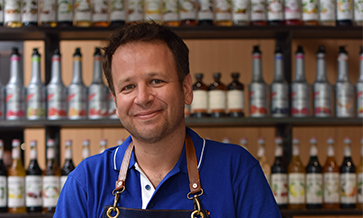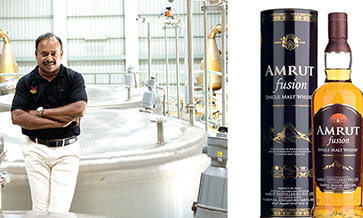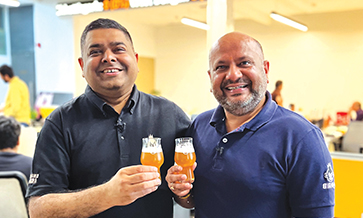Attention-getter or experience-setter, draught beer is fast attracting a growing fan following that is making breweries take notice. But all’s not froth and frolic: there are several challenges to overcome, writes Vikram Achanta
The Indian beer market reached ?38,360 crore in 2022 and is expected to reach ?62,240 crore by 2028, exhibiting a compound annual growth rate of 8.1%, according to IMARC Group.
Out of this number, as per a study that Tulleeho conducted in 2022, craft beer – primarily in the form of freshly brewed beer at the micro-breweries – accounted for not more than 2%.
Of the balance of 98%, draught beer would not account for more than 1% of total revenues. In the last year, however, this a category that has seen intense action on the part of the world’s largest beer companies, AB InBev and Heineken.
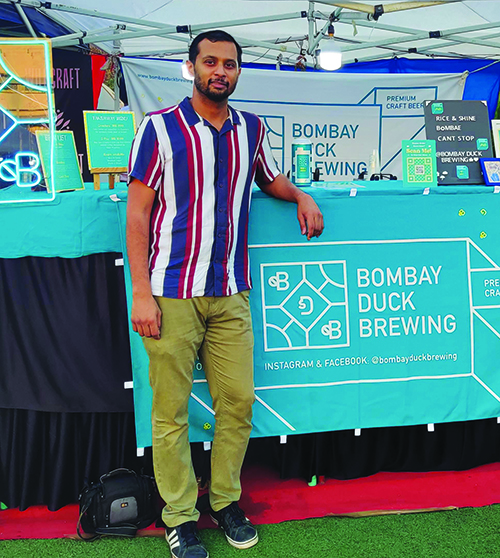
Abhishek Chinchalkar of Bombay Duck says bars must plan draught beer taps in advance.
Draught beer as a stock keeping unit (SKU) punches far above its weight, especially when we consider it from the perspective of the consumer. For the consumer – even the one responsible for hundreds of crores of revenues at India’s micro-breweries –it’s not so much craft beer that they were drinking but a beer that was flavourful and fresh.
Consumers largely equate draught beer with freshness, as opposed to a bottle or can. This has largely been a trick that India’s largest beer companies have missed, with just the home-grown Bira91 being an early mover in this space.
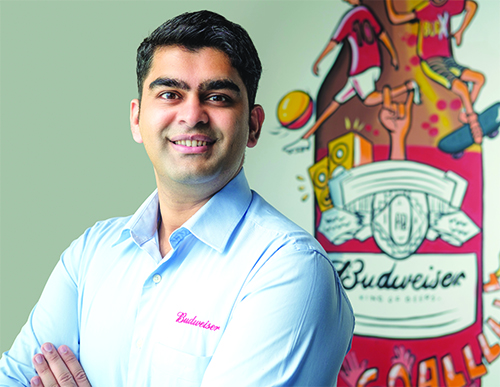
Vineet Sharma of AB InBev says beer on tap allows his brands to connect with consumers.
From the multi-nationals’ perspective, investing heavily in draught beer as a category gives them some “craft” credentials to talk about.
But Gaurav Karnani, Founder of Kolkata-based The Grid and Caldera, says: “Culturally, India is yet to catch up with the international trend of draught beer being the most popular form of beer to be offered in a bar or pub.”
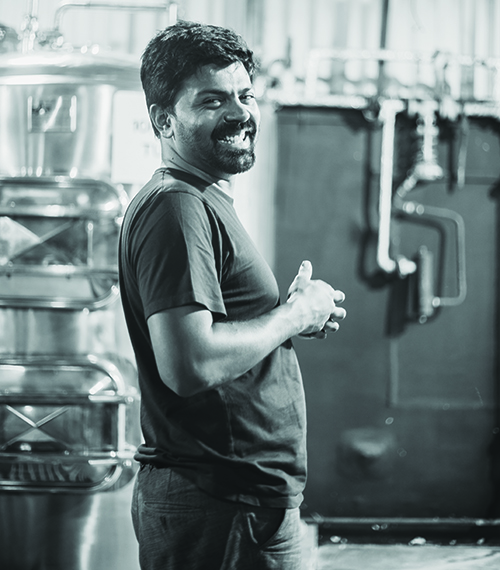
Great State Ale Works’ Nakul Bhonsle plans to directly supply to Goa from his brewery in Maharashtra.
Leveraging formats
Vineet Sharma, Vice-President (Marketing & Trade Marketing) at AB InBev, feels draught beer is all about creating an exceptional experience. “We actively incorporate draught into our events, allowing consumers to experience our premium and super-premium brands in their freshest and most flavourful form, fostering a strong brand connection.”
Prem Dewan, Managing Director of Devans Modern Breweries – maker of Kotsberg and Six Fields, a Pilsner and a Blanche respectively – says draught beer plays a strategic role in the brand journey of a product. “Played smartly, it is a big crowd puller. Since there are not many players in this field, it is easier to catch consumers’ attention.”

Vikram Bahl of UB says draught beer enables releasing smaller experimental batches to see how they perform.
Vikram Bahl, CMO at United Breweries (UB), agrees that draught beer “helps in enabling fun drinking group rituals”.
From a large company’s perspective, draught beer is also a great way of expanding its portfolio and adding SKUs, with the same brand being leveraged either in a bottle/can or draught format.
It also permits them to release a smaller experimental batch into a market, to see how it performs. One example is UB’s launch of Kingfisher Mango Rush.
Smaller and mid-sized breweries are definitely more agile on this front, producing a wider range of styles, refreshing their portfolio more often, and also using draught as an opportunity for interesting collaborations with bars and restaurants.
From a customer perspective (bar or pub), draught as an SKU is also more profitable, although it requires very careful handling.
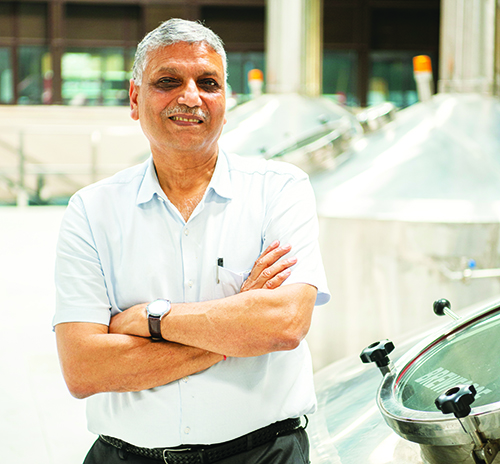
Prem Dewan of Devans Modern Breweries says that played smartly, draught beer is a big crowd puller.
Size matters
If one excludes the micro-breweries, draught beer production in India varies widely. Small production breweries in Maharashtra (Bombay Duck Brewing and Great State Ale Works) typically have capacities of up to 3 lakh litres per annum.
Larger macro-breweries in Karnataka (Geist Brewing Co. and Toit) have annual installed capacities of up to 3 million litres. And then we have the large-scale breweries of UB and AB InBev.
Mainly on account of excise department regulations, small and mid-size breweries supply beer only to in-state customers: Toit and Geist in Karnataka, Caldera in West Bengal, and Great State and Bombay Duck in Maharashtra.
The larger companies typically supply to multiple states, with Devans supplying to around 130 bars across five states and Union Territories. AB InBev supplies 1,500 on-trade accounts across six states; and UB has supply contracts in key states across the South, East and West India.
Capital expenditure
It’s not just scale that is an advantage for the large micro-breweries. Given that, unlike in the West where bars typically already have their dispensing stations, in India these must be provided by the breweries (for free or against a deposit).
The equipment is also then serviced by the breweries, who also provide the CO2 cylinders. This requires a capital investment of up to ?2 lakh per outlet by the breweries themselves, according to Nakul Bhonsle, Co-founder of Great State.
Draught beer requires significant investment across the supply chain, from rejigging the breweries with flash pasteurisation and kegging lines to ensuring that all necessary precautions are taken to get the consumer a pint that stays fresh and flavourful.
Scale is where the large breweries do well. UB has seven breweries across the country, and AB InBev has four. The proximity of the brewing source to the tap, apart from ensuring freshness, also saves on logistics and storage costs, and helps adherence to local laws.

Caldera’s Gaurav Karnani feels draught beer should be the most popular form of beer to be offered in a bar or pub.
Red tape
A recent change in Maharashtra’s excise laws now permits these breweries to not only export their beer out of the state but also package them in cans and bottles. Capacity limits have also been increased to up to 15 lakh litres per year.
Great State, which was previously contract brewing in Goa, is now planning to take advantage of this rule to get direct supply in Goa from their brewery in Maharashtra, a move that will also then help them in greater capacity utilisation.
However, Karnataka does not permit the sale of draught beer that is brewed outside the state. Several states do not permit kegging, so you are not permitted to supply it beyond your premises.
A far more onerous stipulation in Maharashtra and Karnataka is the requirement for a bar that wants to sell draught beer is to attach a draught beer license (called RVB) to their alcohol license.
In Karnataka, where it is impossible to get a fresh license for a bar, this implies that there is no regulatory provision for an outlet that serves only draught beer. In Maharashtra bars and restaurants must procure a draught beer dispensing permission from the local excise office, which is expensive to obtain.
Nakul (Great State) says this is again a cost that some bars and restaurants ask the breweries to pay for. Vineet (AB InBev) is a big votary for “draught-only licenses”. Sibi Venkataraju, Founder-Director of Toit, also points to restrictions on transportation and supply on weekends and public holidays.
For Prem (Devans) the biggest bottleneck lies in the state policies that prevent breweries from selling directly to the outlets. Adding an extra stop in the distribution chain, he says, “increases the chances of a costly piece of equipment being lost or misplaced”.
In the most recent excise policy in Delhi, the distribution of draught beer was restricted to retail vends, sounding the death knell for the draught beer business. No retail vend is equipped with the space and infrastructure for supply and storage, distribution and sale of beers on tap.

Dispensing draught beer is as much a science as it is an art, feels Narayan Manepally of Geist Brewing.
Draught by design
Space is a major constraint when it comes to commissioning beer taps in bars, for the countertop as well as for under-counter location of kegs and CO2 cylinders, beer lines and temperature-controlled storage. Abhishek Chinchalkar, Co-founder of Bombay Duck notes: “A lot of bars look at draught beer as an afterthought. Trying to retrofit tap lines is less than ideal, impacting visibility and creating operational challenges for success.”
Anirudh Singhal, Founder of Speed X, a leading bar design firm, says what is critical at the point of bar design is to decide the number of taps required, invest in the appropriate chilling unit, and links to the taps.
Space also needs to be provided for the kegs and CO2 cylinders, which come in various shapes and sizes. “Abroad you only see the taps and the drip trays for collecting spillage,” Anirudh notes. “Everyone now wants beer on tap, so well-designed bars are a must.”
This is where two things become critical. Customer education (at bars and pubs) and how well breweries can ensure the integrity of their supply chains. Narayan Manepally of Geist Brewing says, “Dispensing draught beer is as much a science as it is an art. The science behind dispensing draught beer needs to be better understood to have a flawless pour.”

Sibi Venkataraju says Toit’s audit and service teams ensure ‘first in, first out’ practices in outlets and quality checks related to temperature.
Smart tech
Breweries are using a variety of methods for the latter, from “based tracking system for kegs”, in the case of Great State and Caldera, to more advanced technologies like radio frequency identification and Internet of Things.
Narayan says Geist has solutions in its supply chain to track the temperature of the truck on its journey to the customer, ensuring minimal impact of temperature on their beers. Bombay Duck’s technicians visit outlets every month for maintenance and sensory evaluation of quality.
Sibi indicates he employs software to track all Toit’s kegs from cleaning and filling to delivery and returns. Toit’s audit and service teams ensure ‘first in, first out’ practices in outlets and quality checks related to temperature.
UB has partnered with South Africa-based Draught Guardian is also using smart technology solutions to track different variables. “Right from the quality of the draught machine, temperature and pour, to volume metrics, tracking quality and visibility of assets, everything is driven by this advanced software platform,” says UB’s Vikram.
After rejigging your factories, navigating a complex regulatory landscape, and being a demanding bar owner, what becomes critical is a “consistently excellent draft beer experience that is paramount for customer retention and brand reputation”.
At the end of the day, a beer industry veteran told me, the success of draught beer will be determined by the pour. “The quality of the first glass of beer determines whether a customer will order a second.”
Multi-nationals are putting their brands and credibility on the line to ensure that their customers (bars and pubs) make more money, and beer consumers get a fresh and flavourful pint. It seems like good times ahead for the mug that cheers!












